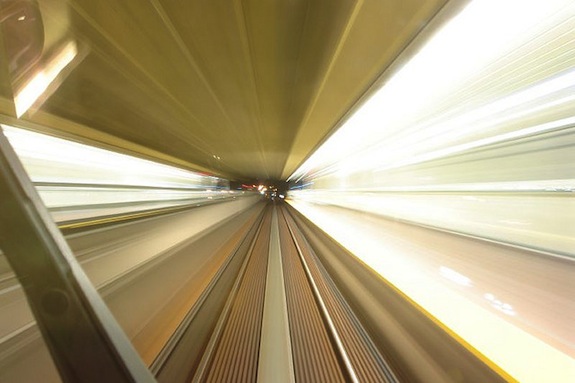Star Trek Got Warp Speed All Wrong
Hold everything people. The blast of a star and light that happens in Star Trek when they jump to warp speed? Wrong! It wouldn’t look like that at all, according to some physicists

Image: Quack712
Hold everything people. The blast of a star and light that happens in Star Trek when they jump to warp speed? Wrong! Warp speed wouldn’t look like that at all, according to some physicists.
The University of Leicester writes that a few students picked this classic movie moment as their senior project:
They have shown that the crew would actually see a central disc of bright light.
There would be no sign of stars because of the Doppler effect – the same effect which causes the siren of an ambulance to become higher in pitch as it comes towards you.
Discovery explains it this way:
As our hypothetical starship rips through spacetime, any light from the stars ahead of us will be blueshifted. Like a police car with sirens blaring, it sounds high-pitched as the car approaches you and lower pitch as it moves away. This is known as Doppler shift — the sound waves (of the siren) are compressed as the car approaches and stretched as the car speeds away.
Electromagnetic radiation works in a similar way. The visible light emitted from the stars ahead becomes compressed as we speed forward. The wavelength gets shorter and shorter the more we accelerate. Very quickly, we’ll see the light moved through the blue part of the visible light spectrum and then through the ultraviolet. The electromagnetic radiation from the stars no longer belongs in the visible spectrum, so our eyes can no longer detect the light. At close to the speed of light, the once-visible light (from our frame of reference) gets pushed into the X-ray part of the spectrum, making the galaxy ahead of us dark.
Last year, we learned that NASA might, just maybe, have a warp drive in the works. io9 wrote about Harold White, a physicist working on the drive:
In terms of the engine’s mechanics, a spheroid object would be placed between two regions of space-time (one expanding and one contracting). A “warp bubble” would then be generated that moves space-time around the object, effectively repositioning it — the end result being faster-than-light travel without the spheroid (or spacecraft) having to move with respect to its local frame of reference.
“Remember, nothing locally exceeds the speed of light, but space can expand and contract at any speed,” White told io9. “However, space-time is really stiff, so to create the expansion and contraction effect in a useful manner in order for us to reach interstellar destinations in reasonable time periods would require a lot of energy.”
So in the future, perhaps we’ll confirm these physics students’ theory.
More from Smithsonian.com:
Feel Like You’re Flying at Warp Speed: Watch This Video of Stacked-Up Space Photos
/https://tf-cmsv2-smithsonianmag-media.s3.amazonaws.com/accounts/headshot/Rose-Eveleth-240.jpg)
/https://tf-cmsv2-smithsonianmag-media.s3.amazonaws.com/accounts/headshot/Rose-Eveleth-240.jpg)